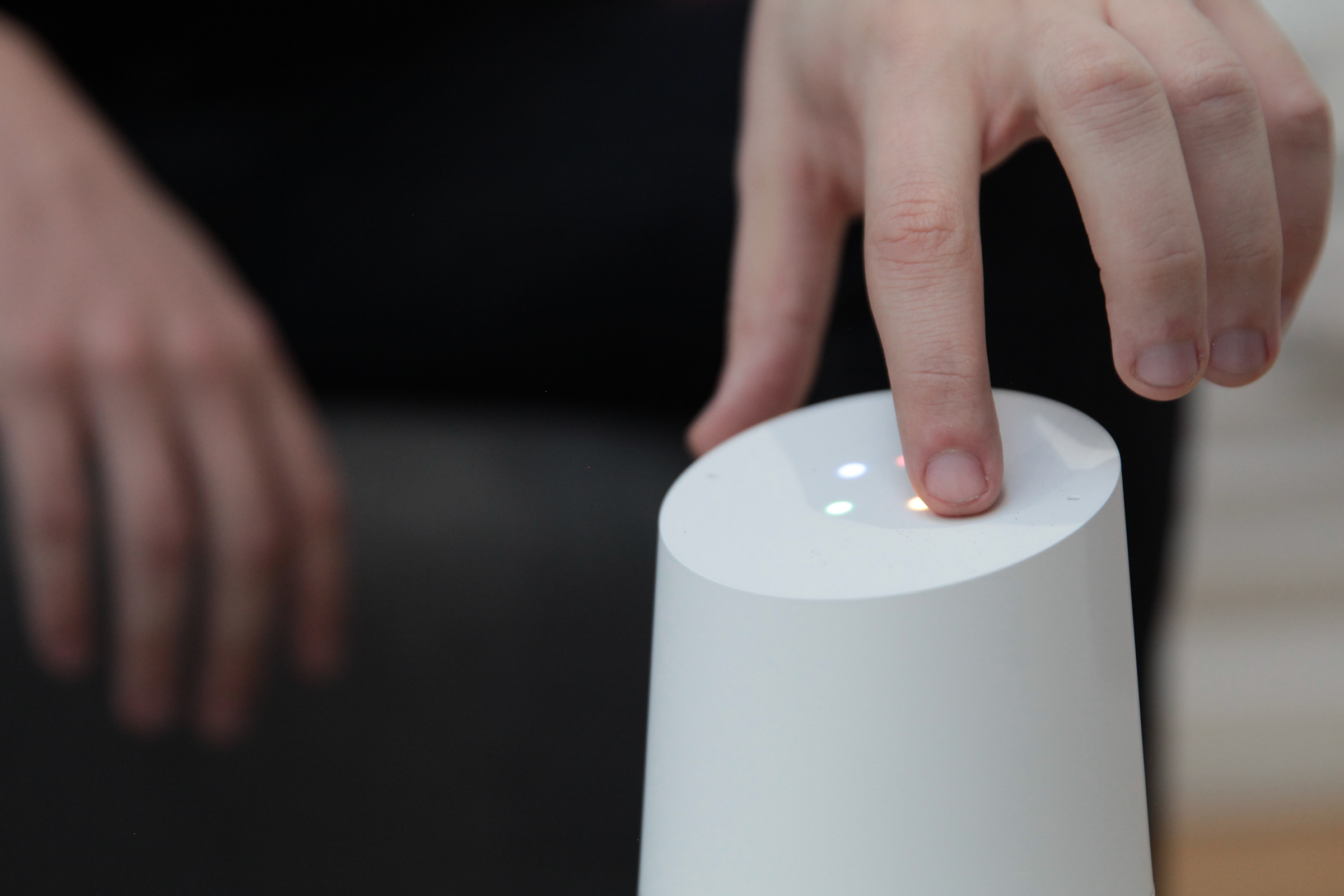A note from the editor:
Earlier this year, an Adobe survey found that nine in 10 business leaders surveyed by Adobe said they were investing in voice-enabled experiences. If you’re planning to prototype or pilot a voice application, you’re not alone. That’s why we’ve compiled recent data on the current state of voice tech and updated our most-viewed articles.
Here’s a look at what has — and hasn’t — changed since we published our first insights on voice technology in 2017. For our latest thinking on emerging technology and its potential to solve the problems that matter, subscribe to the Lab Report.
Update: October 10, 2019
This year, nearly 112 million Americans will use a voice assistant at least monthly, up from 35 million in 2017. Amazon Alexa has 100,000 skills now, up from 15,000 two years ago.
Smart speaker shipments reached 78 million in 2018, up 125% from nearly 35 million in 2017. In the first half of this year, high demand in China pushed global smart speaker shipments to nearly 47 million.
In the United States, one in five adults (around 53 million people) own a smart speaker, and more than half of those households have more than one device — which is why growth in shipments is outpacing growth in the adoption rate. U.S. smart speaker market share is largely unchanged, with Amazon at 70%, Google at 25%, and Apple at 5%.
Analysts are seeing some signs of slowing growth in adoption, and 43% of Americans who don’t own a smart speaker have no interest in getting one. Concerns over privacy and security top the list of reasons why people don’t own smart speakers.
Of course, voice interfaces aren’t limited to smart speakers. One-third of Americans are using a voice assistant at least monthly. Globally, Juniper Research estimates there will be 8 billion digital voice assistants in use by 2023, up from the 2.5 billion assistants in use at the end of 2018. The majority of those assistants will live on smartphones, and the firm predicts that the fastest-growing category for voice over the next several years will be smart TVs, not smart speakers.
Voice and screen combinations — hailed as “the future of digital experiences” — could enable more complex tasks and make voice technology useful across a broader range of activities. (Amazon Alexa is already HIPAA compliant and has potential for use in clinical settings.) Today, just 3% of employee interactions with workplace applications use voice interfaces, but Gartner predicts that will jump to 25% by 2023. The popularity of smart speakers in the home, combined with increasing accuracy and ease of use, could accelerate workplace adoption of voice technology.
Originally published September 13, 2017
If you’ve been waiting to see if voice-enabled solutions are the real deal or a flash in the pan, wait no longer. This year alone, more than 35 million Americans will use a voice-activated assistant such as Amazon’s Alexa, Apple’s Siri, or Microsoft’s Cortana at least once a month. Now is the time to get up to speed on voice-first technology.
What does “voice technology” really mean?
If you’ve used it, you know it as Siri, Alexa, Google, or Bixby. But that’s just the interface. Underneath it all is the software — many layers of it — from voice recognition to artificial intelligence to voice-enabled apps.
Voice technology is the three-way intersection of IoT (devices), AI (services), and UX (interactions). The result is a hands-free, frictionless way to use technology that feels more like science fiction than reality.
What it looks like right now
As we noted in our voice tech reading list, Amazon is expected to sell 113 million Echo devices over the next few years; and though Amazon currently leads the pack, competition in the device market is expected to be fierce. Voice has increasingly become part of our lives, but it’s important to remember that it’s not a product, it’s an experience. And these are just a few examples of experiences — from transportation to healthcare to government — that have been redesigned for voice:
- Automotive – Ford was early to voice in 2007 with the launch of Sync, a communications and entertainment system that lets users make phone calls and control music. The company predicts that “nearly 90 percent of all new vehicles will have [voice recognition] onboard by 2022,” according to Forbes.
- Healthcare – Kaléo’s AUVI-Q is an epinephrine auto-injector that features voice instructions for administering the drug to patients experiencing an allergic reaction. One-way communication is the first step; allowing users to talk back could be next. WebMD recently created an Alexa skill that can answer basic health queries by describing treatments for common ailments and listing side effects of drugs.
- Government – The beta version of an Alexa skill developed for the City of Los Angeles offers information about public events, and the city plans to connect 311 services to the skill in the future. Mississippi and Utah are also developing skills for Alexa, and at the federal level, the GSA’s Emerging Citizen Technology program is exploring solutions for making government services available via digital assistants.
- Hospitality – Wynn Las Vegas has installed Echo devices in each room, letting hotel guests use voice commands to turn on lights, set the temperature, and listen to music. Marriott and Four Seasons properties are also testing Alexa and Siri in guest rooms. Eventually, hotels hope to use voice to power concierge-level services like requesting extra towels or ordering room service.
- Finance – Capital One has developed apps for Alexa and Cortana, and British bank Santander lets customers make payments via voice in its iPhone app. UBS wealth-management clients in Europe can ask Alexa for the chief investment office’s answers to financial and economic questions.
Whether voice reshapes your entire industry or simply becomes an expected mode of interaction with your product or brand, it’s important to consider testing the waters now.
Why is there so much potential? Because voice brings AI home
Early adopters of voice technology may not have been consciously bringing AI into their kitchens and living rooms. Devices like Amazon Echo were initially sold as smart speakers — a novel way to listen to music while connecting to a bit of additional information. But our use of voice could go way beyond home entertainment. The entire family — from toddlers to octogenarians — can command a voice assistant, and the enormous prospective user base is part of the potential. Voice, quite simply, is technology for everyone.
Voice-enabled assistants like Amazon Alexa are increasingly integrated with other devices, from smartphones to smart lightbulbs. IFTTT, an online platform that lets users connect different web services via simple conditional statements, includes applets for brewing coffee and emailing shopping lists. And if one of Alexa’s 15,000+ skills won’t fit your needs, building your own simple skill takes about an hour and doesn’t require any programming skills.
AI-powered voice technology gets smarter as you use it, so most users will never have a need to create custom apps. Advances in voice technology are poised to transform user experience design, drawing on biomimicry to develop AI that feels natural. As Enola Labs CTO Marcus Turner told Forbes, “UX will move closer to human interactions, with machines that are voice driven and close to a typical conversation of today.”
“The next billion” people to come online may never type an email; they’ll use simple mobile devices, inexpensive data, and voice recognition to connect online for the first time.
Overcoming challenges to widespread adoption
Voice technology will help us live futuristic lives of convenience, right? Hold on, not so fast. As with any emerging technology, rapid advances in voice have prompted questions about everything from privacy to inclusion.
Some users are raising concerns about security. What are voice assistants recording, and how can we be sure those audio files are private? There’s no “incognito mode” for voice searches, and attempts to disable permissions can interfere with basic functionality of voice-enabled devices.
Other early adopters have wondered why most voice assistants are female and the impact gendered voices might have on how we interact with devices. And users who aren’t native English speakers sometimes struggle to be understood.
Device makers and developers are already addressing these challenges. They’re also working to overcome another hurdle to widespread adoption: Making the leap from searching (which isn’t hard to do) to browsing for information (which is nearly impossible without a visual interface). Amazon’s new Echo Show incorporates a camera and touchscreen, bringing visual cues to voice-first experiences.
What businesses need to consider today
If you’ve been around long enough to remember the early days of search engines, you may remember rewriting entire websites for SEO. More recently, mobile technology prompted companies to rethink content and experiences to fit small screens and contextual moments.
Voice technology offers another opportunity to rethink everything. Yes, everything.
It’s not just about making existing content fit the constraints of a new device. The arrival of voice suggests that businesses must reconsider product design, partner relationships, and even organizational structure. The entire enterprise must adjust and adapt — from legal frameworks to business processes — and every aspect of a company’s operations stands to benefit greatly. Think of how AI-powered voice technology could help physicians seeking diagnoses or HR managers searching for the right candidate.
Chances are, if you’ve read this far, you see the coming revolution. But your organization’s C-suite might not, and making the case for voice won’t be easy. Starting small might be the answer: Bring a voice-enabled device into your office and let your own team use it to dial into conference calls, schedule meetings, dictate notes, monitor website analytics, manage phone messages, and launch brainstorms. (If that won’t work in your office environment, try voice technology at home and encourage your colleagues to do the same.) Showing is more powerful than telling, and understanding the value to users may inspire small experiments and quick wins … Selling a larger voice strategy is easier once you’ve cultivated an internal team of #voicefirst champions.



